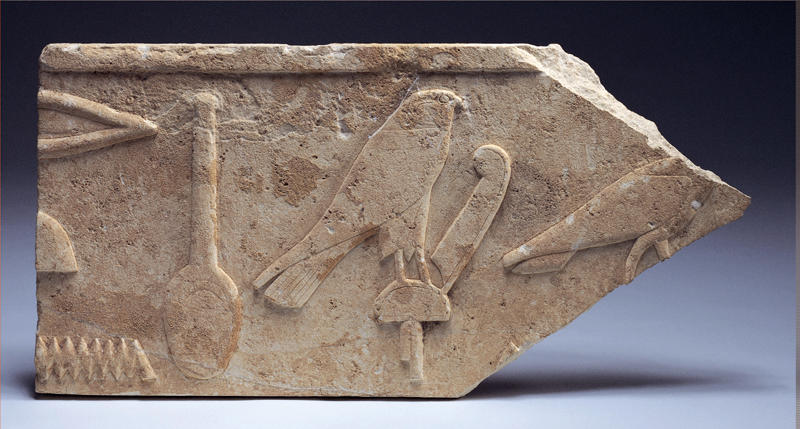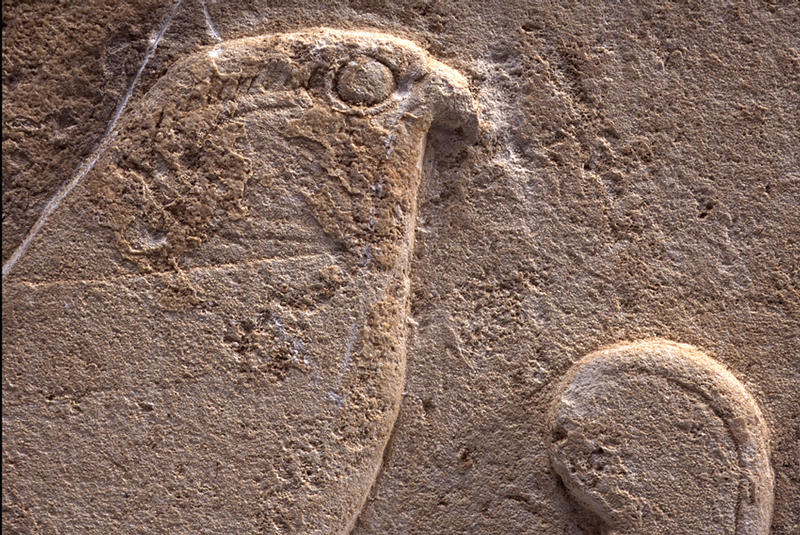Relief with Hieroglyphs"The Beautiful West"
- Egypt
- Egypt, probably Dynasty 5
- 2454 - 2311 B.C.
- Limestone
- H-39.4 W-80.8
Catalogue Entry
To the ancient Egyptians, the solar cycle carried with it the promise of resurrection. Born in the east, the sun traversed the sky and was swallowed up in the west, passing through the underworld only to rise again, reborn, in the east. The west was the land of the dead--the realm of the god Osiris, foremost of the westerners. For that reason, the Egyptians built their tombs on the west bank of the Nile so that the dead might behold the morning sun in the east.
This fragment of an inscribed lintel once adorned a private tomb chapel of the Old Kingdom. It preserves part of a standard offering formula, stating that the king and a god (most often Anubis, the god of embalming, but sometimes Osiris, the god of the dead, or Geb, the earth god) have together granted that the deceased be buried in the western necropolis and that he might receive food offerings on various feast days. The hieroglyphs, carved in low raised relief, include a falcon on a standard--the sign for "west"--and, to the left of it, a tall narrow sign believed to represent a heart and windpipe, meaning "beautiful." Together, they spell out the phrase, "the beautiful west."
LMB
Relief with Hieroglyphs "The Beautiful West"
The ancient Egyptians aspired to a safe arrival in the next world or the "Beautiful West" where they would lead a full life, just as on earth. Located in the westerly direction of the setting sun, they would be welcomed to this land by a beautiful mother goddess. This relief carving is part of a prayer found on the wall of an individual tomb, and we can clearly pick out characters for the "Beautiful West" amongst the surviving script. This phrase, moreover, was also the name of the goddess.

